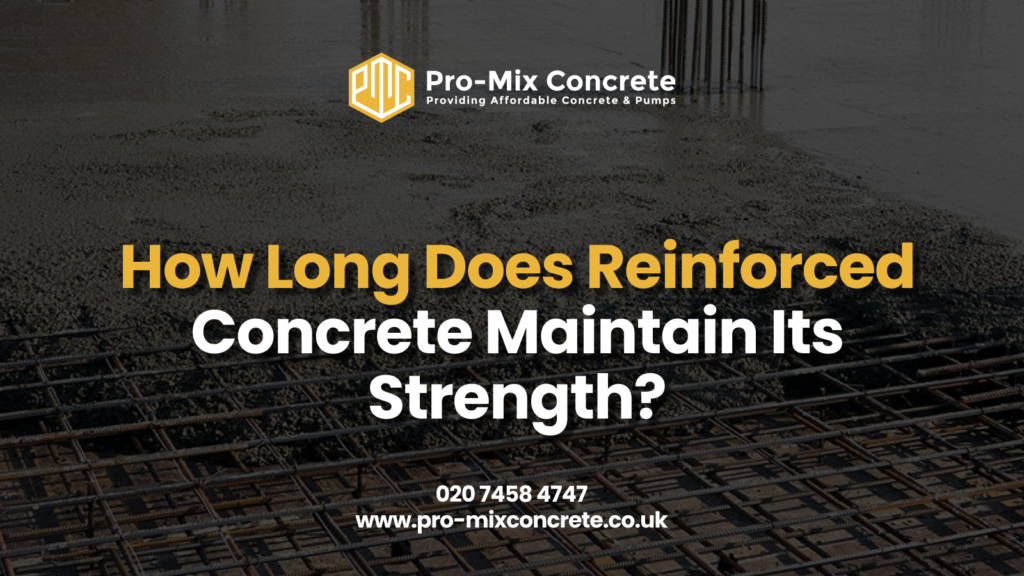“Fibre-reinforced concrete (FRC) is a revolutionary advancement in construction materials, as it combines traditional concrete with various fibres to create superior structural performance. This comprehensive guide explores the key benefits of FRC, including enhanced durability, improved mechanical properties, and cost-effectiveness. Construction professionals will learn when FRC provides the best value compared to traditional reinforcement methods.”
Construction demands are evolving rapidly in 2025, with sustainability and high-performance materials becoming non-negotiable requirements. Traditional concrete, while reliable, often falls short in meeting modern structural challenges and environmental standards. The fibre-reinforced concrete market reflects this shift, with markets expanding at compound annual growth rates.
Fibre reinforced concrete (FRC) addresses these limitations by incorporating various fibres like steel, glass, synthetic, or cellulose directly into the concrete mix. This enhancement transforms ordinary concrete into a high-performance material with superior crack resistance, durability, and structural integrity.
If you’re ready to upgrade your next project with fibre-reinforced concrete, contact our experts at Pro-Mix Concrete for expert consultation and competitive pricing on premium FRC solutions.
What is Fibre-Reinforced Concrete (FRC)?
Fibre-reinforced concrete is a composite material that combines Portland cement concrete with discrete fibres distributed throughout the mix. These fibres act as micro-reinforcement, creating a three-dimensional network that enhances the concrete’s structural properties.
How Fibre-Reinforced Concrete Works?
Fibres are randomly distributed throughout the concrete matrix, creating a reinforcement network that distributes stress across the entire structure. This network prevents crack propagation and growth while increasing ductility and energy absorption.
The fibre system works by bridging micro-cracks as they form, delaying failure and maintaining structural integrity even after initial cracking. This mechanism transforms concrete from a brittle material into a more ductile composite that provides warning before failure.
Types of Fibres and Their Applications
The following are the main fibre types used in concrete reinforcement applications. Each fibre type offers specific benefits and optimal use cases for different construction requirements.
1. Synthetic Macrofibers
Synthetic macrofibers serve as the primary choice for flooring, precast elements, and shotcrete applications. These cost-effective fibres provide excellent crack control and can replace conventional reinforcement in many applications without corrosion concerns.
2. Steel Fibres
Steel fibres excel in applications requiring enhanced toughness and post-crack load capacity. They’re ideal for heavy-duty industrial floors, structural elements under high loads, and pavements subjected to severe traffic conditions while maintaining structural integrity even after cracking.
3. Steel and Micro/Macro Blends
Steel and micro/macro fibre blends combine different fibre sizes to control plastic shrinkage cracking while providing structural toughness. These blends work exceptionally well for:
- Large concrete pours requiring shrinkage control
- Temperature-sensitive applications with thermal cycling
- Projects needing both crack prevention and load capacity
- Structures exposed to extreme weather conditions
4. Glass Fibres
Glass fibres dominate architectural applications and decorative panels. Their lightweight properties with good tensile strength make them excellent for facade systems, architectural elements, and non-structural components where aesthetics matter.
5. Cellulose Fibres
Cellulose fibres provide natural crack control and plastic shrinkage mitigation. These eco-friendly fibres work well in residential construction and smaller projects where environmental sustainability is important.
6. Basalt Fibres
Basalt fibres improve load-bearing capacity in specialised applications like lining structures. They offer excellent chemical resistance and are ideal for tunnels, underground construction, and environments with aggressive chemical exposure.
6 Key Benefits of Fibre-Reinforced Concrete
FRC provides significant advantages over traditional concrete through enhanced mechanical properties and improved durability. The following benefits make FRC an attractive choice for modern construction projects.
1. Enhanced Durability and Longevity
FRC significantly extends concrete lifespan through improved crack resistance and reduced water penetration. The fibre network creates a self-healing effect by bridging micro-cracks before they can propagate and compromise structural integrity.
This enhanced durability translates to superior performance in harsh environmental conditions. FRC maintains its structural properties through freeze-thaw cycles, chemical exposure, and extreme temperature variations that typically damage conventional concrete.
Key durability improvements include:
- Increased resistance to impact and fatigue loading
- Better protection against freeze-thaw damage
- Reduced permeability limits water and chemical penetration
- Enhanced corrosion protection for embedded reinforcement
2. Superior Mechanical Properties
FRC delivers 30-40% higher tensile strength compared to plain concrete, with significantly improved crack control under tension. This enhancement makes structures more resilient to various loading conditions and extends their operational life.
Flexural strength improvements allow FRC to handle bending loads more effectively. This characteristic is particularly valuable in beam applications, slabs, and structural elements where bending moments are critical design factors.
The material’s impact resistance provides superior energy absorption capacity. FRC can withstand sudden loading conditions that would cause traditional concrete to fail catastrophically. This makes it excellent for:
- Blast-resistant construction
- Industrial facilities with dynamic loading
- Structures subject to seismic activity
- High-traffic areas requiring impact protection
Ductility enhancement increases the material’s deformation capacity before failure, providing better warning signs and improved safety margins in critical applications.
3. Cost-Effectiveness and Efficiency
Despite higher initial material costs (typically 10-15% more than conventional concrete), FRC provides substantial long-term economic benefits. Construction time reductions come from simplified reinforcement placement and faster pour schedules.
Labour cost savings result from eliminating traditional reinforcement installation in many applications. The streamlined construction process reduces crew requirements and accelerates project completion timelines.
Lifecycle cost benefits make FRC economically attractive over the structure’s lifespan:
- Maintenance requirements decrease by 40-60%
- Service life extends up to 50% longer than conventional concrete
- Repair frequency drops significantly
- Energy costs are reduced through improved building performance
Want to reduce your project costs with FRC? Get a free quote from our team and discover how fibre reinforcement can optimise your construction budget!
Call Us Today: 020 7458 4747
4. Environmental Advantages (Sustainable Construction)
FRC contributes to environmental sustainability through reduced carbon footprint and resource conservation. Embodied carbon reductions reach up to 40% through optimised mix designs that require less cement and raw materials.
The extended service life of FRC structures reduces replacement frequency, conserving natural resources and minimising construction waste. Many fibre types can incorporate recycled materials, further enhancing environmental benefits.
Resource conservation occurs through:
- Reduced natural aggregate consumption
- Lower cement requirements per unit of performance
- Decreased transportation needs for materials
- Minimised waste generation during construction
5. Improved Fire Resistance
FRC exhibits excellent fire resistance due to fibre inclusions that prevent explosive spalling during high-temperature exposure. The fibre network maintains structural capacity longer than conventional concrete, providing crucial additional evacuation time during emergencies.
Fire performance benefits include higher temperature tolerance, reduced structural damage, and maintained load-bearing capacity even under extreme heat conditions. This improved safety makes FRC valuable for high-occupancy buildings and critical infrastructure.
6. Flexibility and Versatility
FRC’s moldability enables innovative architectural designs while maintaining structural performance. The material can form complex geometric shapes and accommodate thin-section applications impossible with traditional reinforcement methods.
Design flexibility allows architects to create unique structures without compromising safety or durability. Engineers can customise fibre combinations to optimise material properties for specific project requirements, tailoring performance characteristics to match application demands.
Scientific Study: Proven FRC Performance Data
Recent research published in Construction and Building Materials validates FRC’s exceptional performance claims through controlled testing. The study demonstrates that strategic fibre reinforcement delivers measurable improvements across all key structural parameters.
Strength Improvements by the Numbers
Steel fibre content makes a dramatic difference in concrete performance. Increasing fibre volume from 0.25% to 1.5% doubles the shear strength of concrete beams without needing traditional reinforcement. Even more impressive, flexural strength jumps by up to 74% while splitting tensile strength increases by up to 97%.
The most remarkable improvements happen with shear strength, reaching increases of up to 260% when fibre content ranges between 2% and 5%. The research also confirms that fibre shape matters. Hooked-end steel fibres outperform straight fibres for flexural applications!
Cost and Design Benefits
The study reveals significant cost optimisation opportunities:
- Polypropylene fibres can replace up to 78 kg of steel fibres per cubic meter
- Fibre reinforcement reduces or eliminates traditional shear reinforcement needs
- Design procedures become simpler and more cost-effective
- Corrosion resistance improves with synthetic fibre options
When to Use Fibre-Reinforced Concrete: Applications in 2025
FRC delivers superior performance in demanding construction environments. The following applications showcase where fibre reinforcement provides maximum benefits and cost savings.
Infrastructure Projects
FRC excels in infrastructure applications requiring long-term durability and minimal maintenance. Roadways and parking areas benefit from enhanced resistance to heavy traffic loads, while bridge construction utilises crack control properties to protect against de-icing salt penetration and fatigue damage.
Underground applications include:
- Tunnels with superior crack resistance under hydrostatic pressure
- Subway systems require reduced water infiltration
- Water treatment facilities need chemical resistance
- Marine structures exposed to saltwater environments
High-Performance Buildings
Industrial flooring represents the largest FRC application, with manufacturing facilities benefiting from resistance to heavy machinery, chemical exposure, and thermal cycling. Precast construction leverages consistent performance and improved handling properties for architectural panels and building exteriors.
Commercial applications include:
- High-traffic retail spaces require durability
- Data centres need vibration control
- Healthcare facilities with impact resistance need
- Warehouse operations with concentrated loading
Specific Conditions Favouring FRC
Security applications require FRC’s superior energy absorption and impact resistance for government facilities and critical infrastructure. Environmental challenges, including freeze-thaw cycles and chemical exposure, favour FRC’s enhanced durability and reduced permeability.
Construction efficiency benefits include:
- High steel prices are making fibre reinforcement cost-competitive
- Material supply shortages affecting traditional reinforcement
- Remote locations requiring simplified placement procedures
- Projects where long-term performance justifies higher initial costs
Advancements and Future Outlook for FRC in 2025
New technologies and research developments are expanding FRC capabilities and market adoption. Industry trends point toward increased standardisation and wider acceptance in mainstream construction.
What’s New in FRC Technology?
Ultra-High-Performance Fibre Reinforced Concrete (UHPFRC) now achieves compressive strengths exceeding 150 MPa while maintaining excellent ductility. Advanced fibre development includes:
- Optimised geometries
- Hybrid combinations
- Bio-based materials for sustainability
Smart fibres with embedded monitoring capabilities provide real-time structural health information. Research focuses on eco-efficient mix designs and self-healing concrete systems that automatically repair minor cracks.
Implementation Realities
Initial material costs run 10-15% higher than conventional concrete, but lifecycle savings often justify this investment within the first decade. Success requires specialised mixing equipment, modified placement techniques, and experienced supervision.
Critical success factors include:
- Uniform fibre distribution
- Proper mixing procedures
- Following manufacturer guidelines consistently
Professional guidance helps avoid common implementation pitfalls while ensuring optimal performance.
Final Call
Fibre-reinforced concrete is a significant advancement in construction materials, offering superior durability, enhanced mechanical properties, and long-term cost benefits. The diverse fibre types provide tailored solutions for specific applications, ranging from infrastructure projects to high-performance buildings.
Get ready to expedite your construction projects with Pro-Mix Concrete companies premium fibre-reinforced concrete solutions! Our expert team delivers customised FRC formulations that maximise performance while optimising costs for your specific applications. With proven expertise in fibre selection, mix design, and quality control, we ensure your projects achieve superior durability and long-term value.
Remember that concrete failures cost careers. And Pro-Mix prevents both. Get fibre reinforcement that works the first time, every time.
Call Us Today: 020 7458 4747
Frequently Asked Questions
Steel fibres provide maximum toughness and post-crack strength. Synthetic fibres offer crack control and corrosion resistance. Glass fibres suit architectural applications. Cellulose fibres prevent plastic shrinkage cracking naturally.
Fibre additions typically maintain or slightly increase compressive strength while significantly improving tensile strength, flexural capacity, and crack resistance compared to plain concrete.
FRC works best for crack control, impact resistance, and thin sections. Traditional reinforcement suits heavy structural loads requiring specific placement and continuous reinforcement paths.
Yes, fibre additions require mix adjustments for workability, modified placement techniques for uniform distribution, and specialised equipment for proper mixing and handling procedures.
Enhanced durability, improved crack resistance, increased impact strength, reduced maintenance costs, faster construction, and environmental sustainability through extended service life and material optimisation.
Higher initial costs, potential fibre exposure, uniform distribution requirements, modified placement techniques, and the need for specialised mixing equipment and trained personnel present implementation challenges.
- Dennis Broderick
- Dennis Broderick is the founder and owner of Pro-Mix Concrete Company, a trusted name in ready-mix concrete solutions across the UK. With over 20 years of hands-on experience in the construction and concrete industry, Dennis brings unmatched expertise, practical insights, and a commitment to quality on every project - from residential driveways to large-scale commercial developments.
 BlogDecember 22, 2025Guide To Concrete Finishes: 9 Different Types of Finishes
BlogDecember 22, 2025Guide To Concrete Finishes: 9 Different Types of Finishes BlogDecember 15, 2025Tips to Hire Concrete Pumps in London
BlogDecember 15, 2025Tips to Hire Concrete Pumps in London BlogDecember 12, 2025How Long Does Reinforced Concrete Maintain Its Strength?
BlogDecember 12, 2025How Long Does Reinforced Concrete Maintain Its Strength? BlogDecember 10, 2025Is Ready Mix Concrete As Good As Hand Casting?
BlogDecember 10, 2025Is Ready Mix Concrete As Good As Hand Casting?





